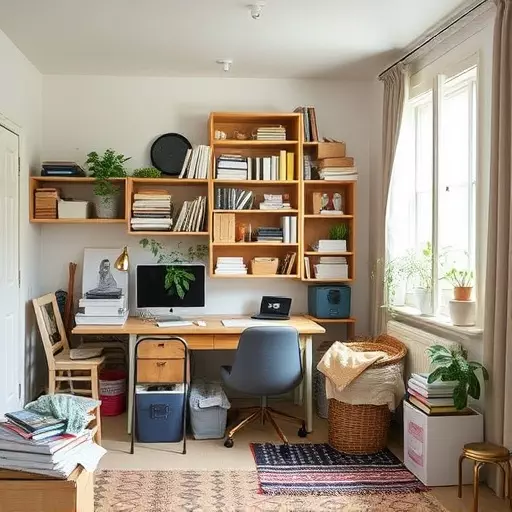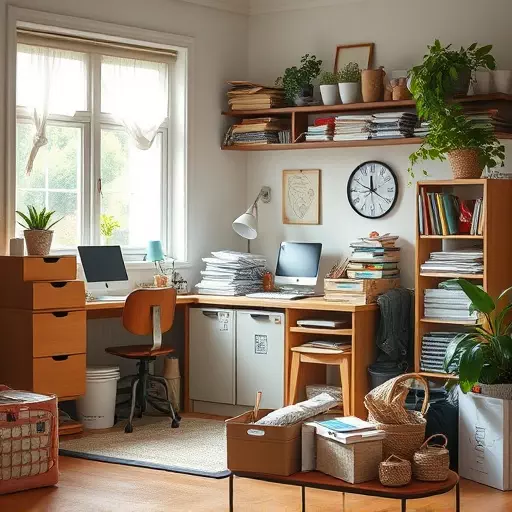Assess your home's clutter by identifying problem areas, understanding root causes like lack of storage or hoarding tendencies, and making informed decisions about keeping, donating, or discarding items. Evaluate each room's functionality and personal value objectively to transform your space into a clutter-free zone through effective home organization and decluttering.
Tired of living amidst chaos? Discover the art of transforming your home into a haven of calm with our comprehensive guide to achieving a clutter-free zone. We’ll walk you through the essential steps, from assessing your current clutter and identifying its sources, to creating tailored storage solutions for each room. Learn how setting clear goals, categorizing items wisely, and maintaining regular check-ins can revolutionize your living space, fostering a sense of order and tranquility. Embrace home organization and decluttering today!
Assessing Your Clutter

Assessing your home’s clutter is the first step towards achieving a streamlined, organized space. Start by acknowledging the areas that are overflowing with items and identifying the root causes of the mess. Is it a lack of storage solutions? A tendency to accumulate items over time? Or perhaps a mix of both? Understanding these patterns will help you make informed decisions about what to keep, donate, or discard.
Take a critical look at each room, considering functionality and personal value. Ask yourself: Do I use this item regularly? Does it bring me joy? By objectively evaluating your belongings, you can begin to let go of items that no longer serve a purpose in your life or home. This process forms the foundation for creating a clutter-free zone, setting the stage for effective home organization and decluttering.
– Identifying sources of clutter in your home

Clutter is often a result of disorganization, so the first step in streamlining your home for a clutter-free zone is to identify its sources. Start by assessing each room and considering items that are no longer needed or used but tend to accumulate over time. Common culprits include unused appliances, an excessive collection of books, magazines, and papers, as well as clothing and accessories that have lost their appeal or fit.
Take a walk around your home and observe the areas where things tend to pile up. Kitchens, living rooms, and bedrooms are often hotspots for clutter. By understanding these patterns, you can begin to implement strategic storage solutions and organizational practices tailored to each space, ensuring a more ordered and clutter-free environment through effective home organization and decluttering.
In the pursuit of a clutter-free home, understanding the root causes is key. By assessing and identifying the sources of clutter, you can begin to orchestrate a systematic approach to organization and decluttering. Embrace minimalism, reuse, and recycle where possible, transforming your living space into a serene sanctuary free from the chaos of excess. With dedicated effort and consistent maintenance, achieving and maintaining a clutter-free zone in your home is not just feasible but also immensely satisfying.


